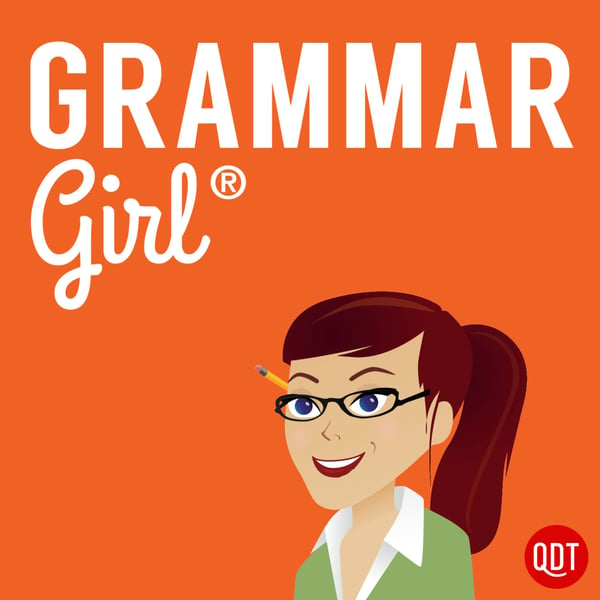From Metal Type to Metaphor: Printing Terms that Extended Their Reach. The Positive 'Anymore.' Gigglemare.
Grammar Girl Quick and Dirty Tips for Better Writing
Mignon Fogarty, Inc.
4.5 • 2.9K Ratings
🗓️ 28 November 2023
⏱️ 18 minutes
🧾️ Download transcript
Summary
Transcript
Click on a timestamp to play from that location
| 0:00.0 | According to Glenn Fleischman, the author of our first segment, when you're covered with ink, everything looks funny. |
| 0:07.0 | Like most industries and subcultures, the printing industry has a whole language spoken by nobody else. But also like other industries, sometimes |
| 0:16.7 | words do leak out and expand their meanings into metaphors. |
| 0:28.0 | Grammar Girl here, I'm in Yon Fog, Fog Fog, your friendly guide to the English language. |
| 0:31.0 | Stick around, because after we talk about fun and fascinating printing terms, we'll talk |
| 0:36.7 | about an interesting phenomenon called the positive anymore. Today we're going to typecast you. |
| 0:47.5 | The stereotype of word nerds being interested in escaped terminology is a cliche but it's a hard impression to shake so please |
| 0:56.2 | don't get out of sorts from our boilerplate jokes. As you may have guessed the |
| 1:02.0 | lines you just heard are full of not very subtle word play that uses printing terms, most from the 19th century, that became adopted into everyday language during times of huge societal change. |
| 1:16.2 | Two, even made a journey from French into English not long after being coined. |
| 1:21.6 | The terms are typecast, stereotype, cliche, and boilerplate. Out of sorts is a bonus, a |
| 1:29.2 | far older term possibly from the same pot of molten lead alloy, while impression is thrown in for luck. |
| 1:37.0 | It's not clear why printing terms slip so readily into English. It might be that writers and printers were once not as far apart |
| 1:46.8 | as they are now when legions of intermediaries stand between the word going down on paper or screen and appearing on the real or virtual |
| 1:56.0 | page. The lines between printer, publisher, and bookseller were kind of blurry starting shortly after Johann Gutenberg's ostensible invention of the European form of movable type printing around 1450s, C.E. |
| 2:13.2 | Perhaps writers close association with the art of printing led to an easy reach to find familiar |
| 2:19.3 | terms to fit new purposes. |
| 2:22.9 | In the 1800s in the United States, for example, authors often had the rights to buy the printing |
| 2:28.6 | plates of their work after a publisher had produced a certain number of copies or printings, |
| 2:34.4 | or out of bankruptcy, which was a frequent fate, |
| 2:37.6 | and then the writer would hire a printer |
| 2:40.2 | and become a publisher or bookseller themselves. |
... |
Transcript will be available on the free plan in -490 days. Upgrade to see the full transcript now.
Disclaimer: The podcast and artwork embedded on this page are from Mignon Fogarty, Inc., and are the property of its owner and not affiliated with or endorsed by Tapesearch.
Generated transcripts are the property of Mignon Fogarty, Inc. and are distributed freely under the Fair Use doctrine. Transcripts generated by Tapesearch are not guaranteed to be accurate.
Copyright © Tapesearch 2025.

